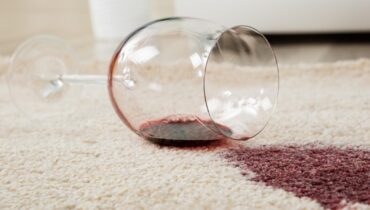📌 The One Seat Choice That Could Save You From Getting Sick on Your Next Flight

Posted 20 July 2025 by: Admin
The Hidden Risks: Why Airplanes Are Germ Factories
The moment you step aboard a commercial aircraft, you enter what infectious disease specialists call a biological minefield. « Airline carriers are impressive carriers of the common cold, » warns Dr. Anthony Ognjan, a board-certified physician specializing in infectious diseases.
The science behind this stark reality is troubling. Commercial airplanes pack hundreds of passengers into enclosed spaces for extended periods. « We know that respiratory droplets that come from a cough or sneeze are one of the most common ways to contract an illness like influenza or COVID-19, » explains Dr. Kathleen Mueller from the American Academy of Family Physicians. Every cough becomes a potential threat when you’re surrounded by strangers breathing the same recycled air.
The cabin environment amplifies these risks dramatically. Airplane humidity levels plummet below 20% – drastically lower than the 30-60% your body expects at home. This desert-like atmosphere isn’t just uncomfortable; it’s dangerous. The dry air compromises your natural defense systems, causing nasal passages and throat tissues to dry out completely.
« Low humidity creates a much more tolerant environment for germs, » Ognjan explains. Your body’s first line of defense – the protective mucus in your nose and throat – simply disappears. Viruses and bacteria thrive in these conditions, surviving longer and spreading faster than in normal environments.
The result? A perfect storm for illness transmission: hundreds of people trapped together in pathogen-friendly conditions where your immune system operates at reduced capacity.
Strategic Seat Selection: Your First Line Of Defense
Knowing these hostile cabin conditions exist, your defense begins before you even board. The seat you choose can dramatically reduce your exposure to airborne pathogens and infected passengers.
« Generally speaking, a middle or aisle seat will have more contact with other passengers than a window seat will, » states Dr. Mueller. Every passenger walking past an aisle seat represents another potential exposure. Middle seats sandwich you between strangers, maximizing contact points. Window seats create a physical barrier against the flow of foot traffic and wandering passengers.
But location matters beyond just window versus aisle. Dr. Ognjan recommends something more specific: « a window seat in the back of the plane is often the safest. » The reasoning is tactical. « The last couple rows of the cabin prevent you from being breathed or coughed on from behind, » he explains.
This isn’t just theory. Research confirms that proximity to infected individuals determines transmission risk more than any other factor. A window seat in the aircraft’s rear section minimizes these dangerous encounters by limiting the directions from which respiratory droplets can reach you.
The strategy isn’t foolproof – no seat guarantees complete protection. But choosing wisely transforms your flight from maximum vulnerability to calculated risk management. Your seat selection becomes the foundation of your entire in-flight health strategy.
Essential Pre-Flight And Onboard Hygiene Protocols
Smart seat selection sets the stage, but the real battle begins with what you touch. Before settling into your carefully chosen window seat, your hygiene protocol must activate immediately.
Start with a strategic bathroom visit before boarding. « You have no control over what germs existed before you entered, and they are not cleaned mid-flight, » warns Dr. Ognjan about airplane lavatories. This simple step eliminates the need to navigate cramped, contaminated spaces during flight.
Once seated, deploy your first weapon: disinfectant wipes. Not baby wipes – proper disinfectant wipes that actually kill pathogens. Target the high-contact surfaces that previous passengers have touched: tray tables, armrests, and seat belt buckles.
The urgency is real. « Germs can survive for hours or days after the passenger who brought them on board has departed, » explains Dr. Ognjan. That innocent-looking tray table could harbor respiratory viruses from passengers who flew yesterday or even earlier this week.
The contamination pathway is predictable. « Infections during flights can be transmitted not only by aerosols that remain airborne and can be inhaled, but also by large droplets that settle on surfaces or by direct contact with secretions, body fluids or contaminated surfaces, » he notes.
Every surface becomes a potential transmission vector. Your systematic disinfection creates a clean zone around your seat, establishing the foundation for safe eating, drinking, and general comfort throughout your flight.
Critical In-Flight Health Measures That Actually Work
Your clean zone established, the next phase demands constant vigilance with every action you take. Hand sanitizer becomes your most essential tool – not just any time, but at specific critical moments.
Before eating anything, sanitize first. Dr. Mueller emphasizes this non-negotiable rule for in-flight dining. After touching overhead bin handles, seat-back pockets, or any communal surface, apply sanitizer immediately. Most crucially: resist touching your eyes, mouth, or nose afterward. « It is one of the most likely culprits for increased risk of getting sick while flying, » warns Dr. Ognjan about this unconscious habit.
Hydration strategy matters more than you realize. Skip the coffee and cocktails. « Even though it can be tempting, I recommend passing on the caffeine or alcohol, which can dehydrate you in already-dry air, » advises Dr. Mueller. Water counters the cabin’s moisture-stealing environment.
Your mask provides another crucial barrier. Despite airplane filtration systems, research confirms masks slow airborne illness transmission, especially on longer flights. They’re particularly vital if you’re immunocompromised.
When someone nearby starts coughing or sneezing, act immediately. Move away if possible or request a different seat. « A mask can help protect you from airborne germs, especially if someone nearby is coughing or sneezing, » adds Dr. Ognjan.
« It is possible to travel without getting sick, especially if you take the right precautions! » reassures Dr. Mueller. These evidence-based measures transform flying from risky exposure into controlled protection.



















